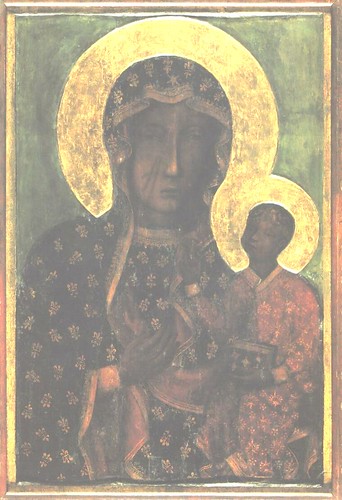
Image by IoSonoUnaFotoCamera on Flickr.com
Częstochowa is a city in south Poland on the Warta River. Częstochowa lies among the picturesque Jurassic rocks of Kraków-Częstochowa Upland, topped with the ruins of Medieval castles. The town is known for the famous Pauline monastery of Jasna Góra that is the home of the Black Madonna painting, a shrine to the Virgin Mary. Every year, millions of pilgrims from all over the world come to Częstochowa to see it. There is also a Lusatian culture excavation site and museum in the city and ruins of a medieval castle in Olsztyn, approximately 25 kilometres from the center of the city.
Pope John Paul II, a native son of Poland, prayed before the Madonna during his historic visit in 1979, several months after his election to the Chair of Peter. The Pope made another visit to Our Lady of Częstochowa in 1983 and again in 1991.
The Black Madonna of Częstochowa is a holy icon of the Virgin Mary, that is both Poland’s holiest relic and one of the country’s national symbols.
Because of the Black Madonna, Częstochowa is regarded as the most popular shrine in Poland, with many Polish Catholics making a pilgrimage (pielgrzymka) there every year. Often, people will line up on the side of the road to hand provisions to the pilgrims (pielgrzymi) as those who walk the distance to Częstochowa walk the entire day and have little means to get things for themselves.
Black Madonna is a painting of the Madonna and Christ Child which legend states was painted by St. Luke the Evangelist. There have been reports for centuries of miraculous events such as spontaneous healings occurring to those who made a pilgrimage to the portrait. It gets its name “Black Madonna” from the soot residue that discolors the painting. The soot is the result of centuries of votive lights and candles burning in front of the painting.
Do następnego razu… (Till next time…)





